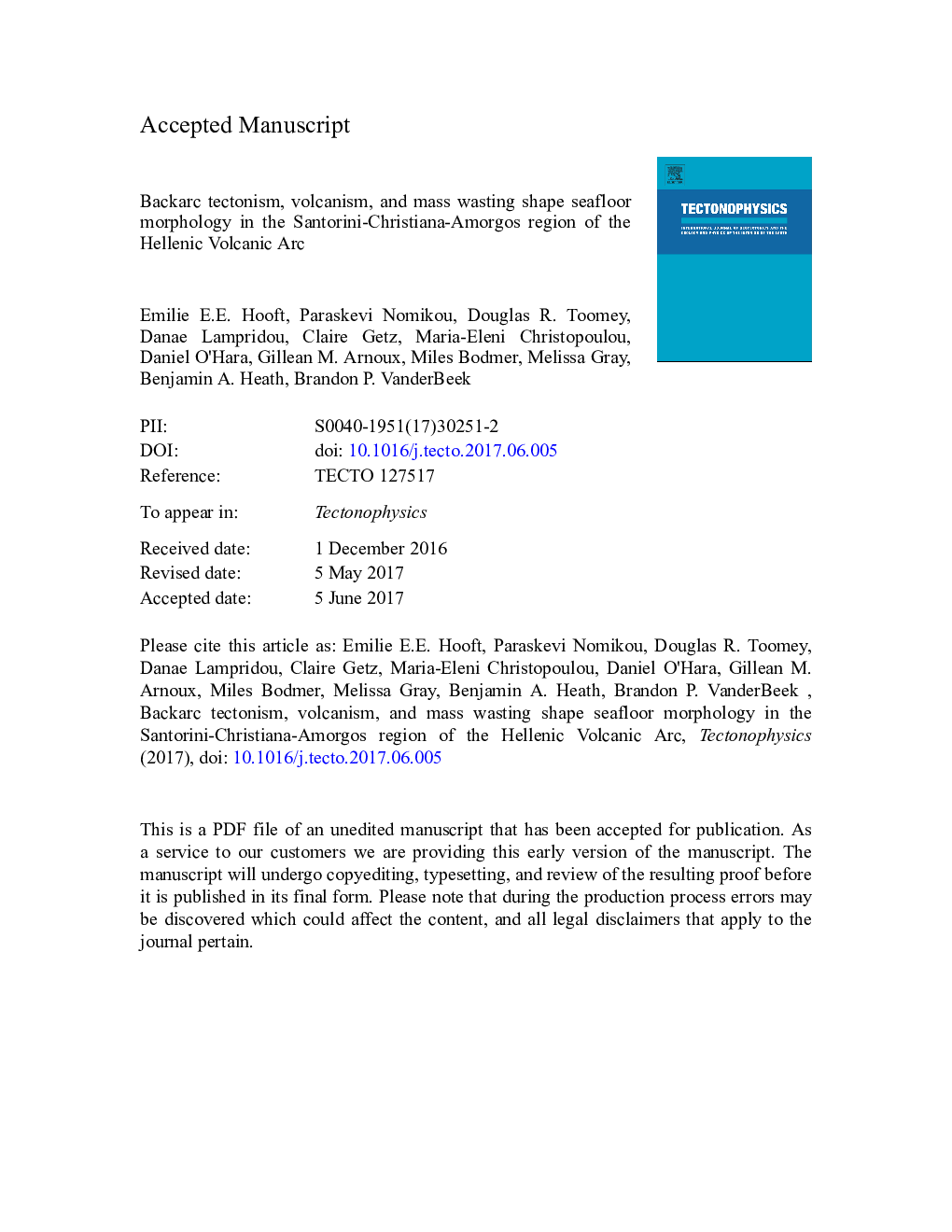| کد مقاله | کد نشریه | سال انتشار | مقاله انگلیسی | نسخه تمام متن |
|---|---|---|---|---|
| 5781548 | 1636694 | 2017 | 62 صفحه PDF | دانلود رایگان |
عنوان انگلیسی مقاله ISI
Backarc tectonism, volcanism, and mass wasting shape seafloor morphology in the Santorini-Christiana-Amorgos region of the Hellenic Volcanic Arc
دانلود مقاله + سفارش ترجمه
دانلود مقاله ISI انگلیسی
رایگان برای ایرانیان
کلمات کلیدی
موضوعات مرتبط
مهندسی و علوم پایه
علوم زمین و سیارات
فرآیندهای سطح زمین
پیش نمایش صفحه اول مقاله

چکیده انگلیسی
In subduction zone backarcs, extensional deformation and arc volcanism interact and these processes, together with mass wasting, shape the seafloor morphology. We present a new bathymetric map of the Santorini-Christiana-Amorgos backarc region of the Hellenic subduction zone by merging high-resolution multibeam swath data from the R/V Langseth PROTEUS seismic experiment with existing maps. The map together with Knudsen subbottom echosounding profiles reveal that recent tectonism, volcanism, and mass wasting are more prevalent in the Santorini-Amorgos region on the east side of Santorini than in the Christiana Basin on the west side. In the Santorini-Amorgos region, large normal faults form the Anydros and Anafi Basins. Where normal fault segments overlap, two nearby accommodation zones generate a relay ramp and the adjoining Anydros synclinal horst with associated complex faulting and elevated seismicity. The ongoing normal faulting in the Santorini-Amorgos region is accompanied by potentially tsunamigenic submarine landsliding; we identified a large submarine landslide along the Santorini-Amorgos Fault and a smaller landslide with an overlying debris chute along the Amorgos Fault. Volcanic activity is also focused in this eastern region along the Kolumbo lineament within the Anydros Basin. Within the Christiana Basin we discovered the Proteus Knoll and adjacent buried edifice. We suggest that this is an older volcanic edifice formed along the Hellenic Volcanic Arc between Santorini and Milos. Around Santorini itself, features formed during, and immediately after, the Late Bronze Age eruption dominate the seafloor morphology such as the northern strait and wrinkled seafloor pyroclastic flow deposits. This topography is continually reshaped at a smaller scale by ongoing mass wasting. We infer that the earthquake, volcanic, and tsunami activity of the Santorini-Amorgos region is a consequence of focused northwest-southeast extension as the southeastern Aegean moves away from the Attico-Cycladic complex in response to slab breakup and rollback.
ناشر
Database: Elsevier - ScienceDirect (ساینس دایرکت)
Journal: Tectonophysics - Volumes 712â713, 21 August 2017, Pages 396-414
Journal: Tectonophysics - Volumes 712â713, 21 August 2017, Pages 396-414
نویسندگان
Emilie E.E. Hooft, Paraskevi Nomikou, Douglas R. Toomey, Danai Lampridou, Claire Getz, Maria-Eleni Christopoulou, Daniel O'Hara, Gillean M. Arnoux, Miles Bodmer, Melissa Gray, Benjamin A. Heath, Brandon P. VanderBeek,